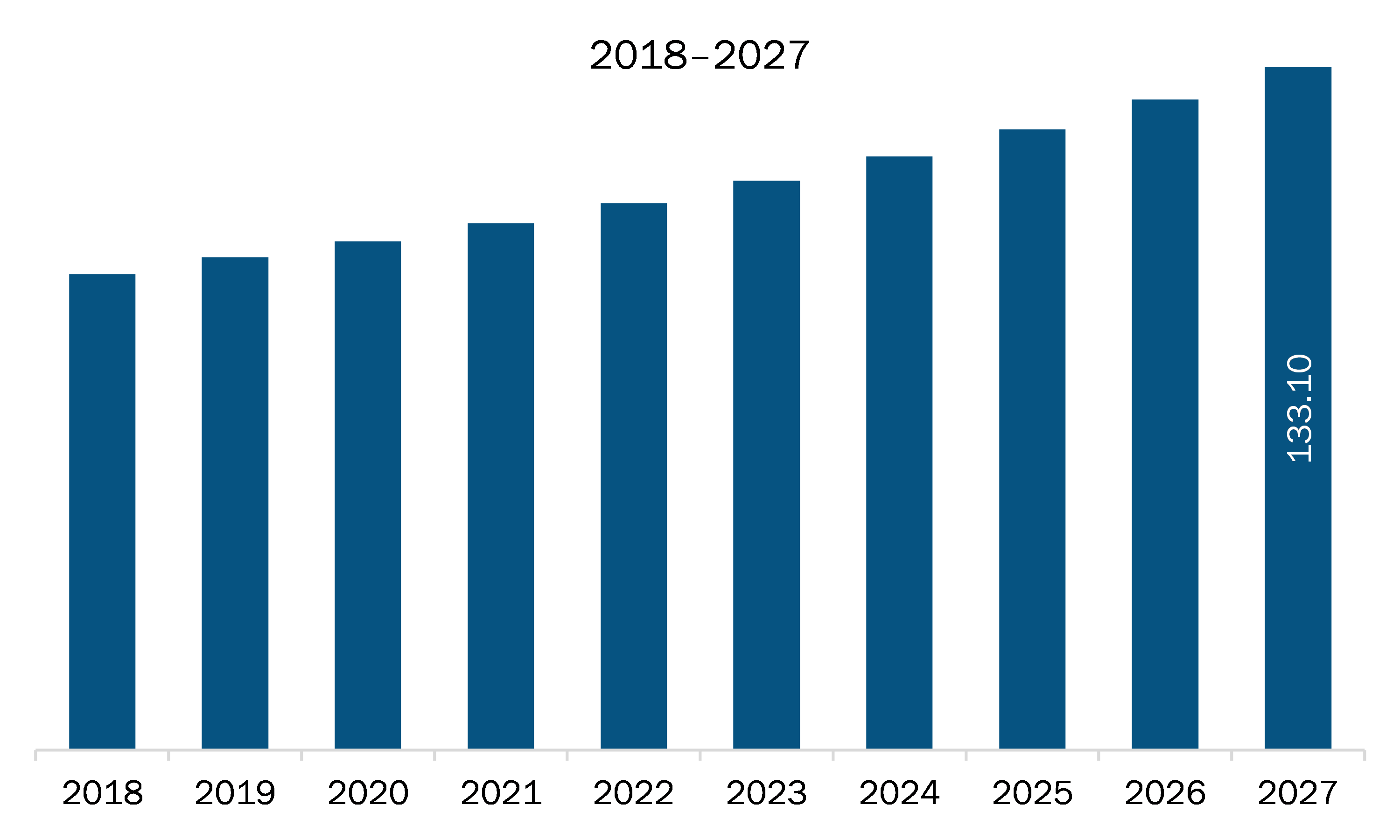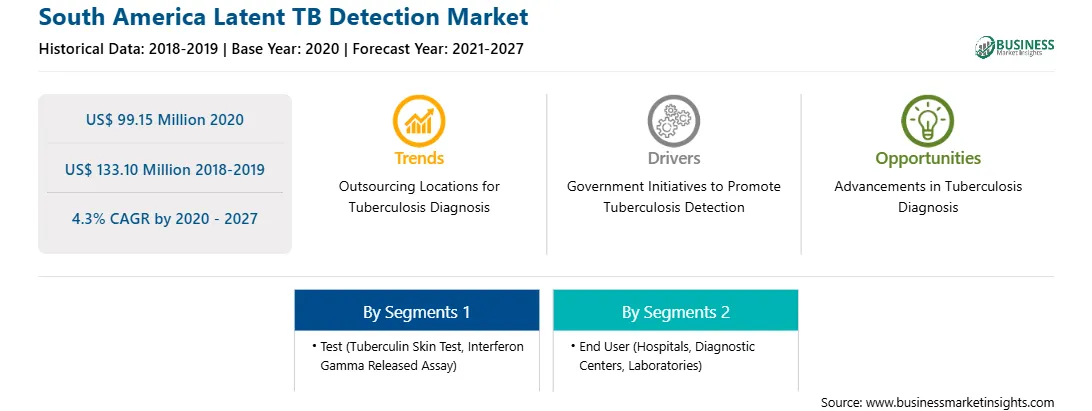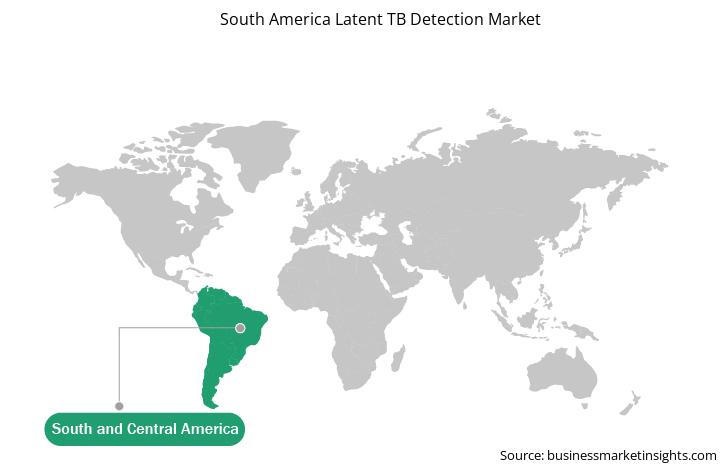SAM region consists of Brazil and Rest of SAM. Brazil is expected to have the major market share in this region. Also, it is projected to grow with highest growth rate. Tuberculosis is an infectious disease that affects the lungs. TB elimination requires treatment of millions of persons with latent tuberculosis infection. Brazil has shown a decline in incidence and mortality rates owing to the performance of TB control programs. However, the disease burden continues to be significant, Brazil is one of the 30 high TB burden countries. As per the WHO, in 2018, around 76,000 new TB cases and 4500 TB deaths were reported in Brazil. Many organizations are involved in control programs to achieve the specific targets of the sustainable development goals (SDGs) until 2030 and World Health Organization (WHO)’s End TB Strategy to end the TB epidemic by 2035. For instance, the Unitaid-funded IMPAACT4TB project (2017-2021) has been working in 12 high-burden countries, including Brazil. In addition, government in the country is helping people suffering from TB. For instance, in November 2019, the Government of Brazil announced 70% discount on rifapentine to 30,000 people receiving treatment that year. The price reduction of latent TB treatment is a step forward in tackling the disease, and in improving the lives of people. Increasing prevalence of tuberculosis and growth of market in emerging economies are the major factor driving the growth of the SAM latent TB detection market.
In case of COVID-19, SAM is highly affected especially Brazil followed by Argentina and Columbia. The COVID-19 pandemic has become the most significant challenge in the region. The region's situation is deteriorating as a result of economic uncertainty and ongoing conflicts. Several countries, for example, are undergoing violent conflict and are unable to implement any public health measures. However, the recent pandemic is causing havoc in the SAM region's economies. A sudden drop in domestic and external demand for goods and products, and halted production due to labor shortage, are major impacts observed in the region. Additionally, tightened financial condition is also decreasing the economic activities in the region. The COVID-19 pandemic has had enormous health, social, and economic consequences since the beginning of 2020, and it is expected to continue in 2021 and beyond. Even after some of these effects are mitigated or contained, there will be medium- and long-term consequences, including for the tuberculosis epidemic and response. The pandemic has the potential to reverse progress toward TB targets by the end of 2019. People with tuberculosis in the region, for example, reported significant difficulties in accessing TB services during the pandemic and associated lockdowns. Difficulties in obtaining transportation to access TB care, as well as increased stigma due to the similar symptoms of both respiratory diseases, have complicated TB management.

Strategic insights for the South America Latent TB Detection provides data-driven analysis of the industry landscape, including current trends, key players, and regional nuances. These insights offer actionable recommendations, enabling readers to differentiate themselves from competitors by identifying untapped segments or developing unique value propositions. Leveraging data analytics, these insights help industry players anticipate the market shifts, whether investors, manufacturers, or other stakeholders. A future-oriented perspective is essential, helping stakeholders anticipate market shifts and position themselves for long-term success in this dynamic region. Ultimately, effective strategic insights empower readers to make informed decisions that drive profitability and achieve their business objectives within the market.

| Report Attribute | Details |
|---|---|
| Market size in 2020 | US$ 99.15 Million |
| Market Size by 2027 | US$ 133.10 Million |
| Global CAGR (2020 - 2027) | 4.3% |
| Historical Data | 2018-2019 |
| Forecast period | 2021-2027 |
| Segments Covered |
By Test
|
| Regions and Countries Covered | South and Central America
|
| Market leaders and key company profiles |
The geographic scope of the South America Latent TB Detection refers to the specific areas in which a business operates and competes. Understanding local distinctions, such as diverse consumer preferences (e.g., demand for specific plug types or battery backup durations), varying economic conditions, and regulatory environments, is crucial for tailoring strategies to specific markets. Businesses can expand their reach by identifying underserved areas or adapting their offerings to meet local demands. A clear market focus allows for more effective resource allocation, targeted marketing campaigns, and better positioning against local competitors, ultimately driving growth in those targeted areas.

The SAM latent TB detection market is expected to grow from US$ 99.15 million in 2020 to US$ 133.10 million by 2027; it is estimated to grow at a CAGR of 4.3% from 2020 to 2027. Advancements in tuberculosis diagnosis is expected to catalyze the market growth. Fluorescent stamping, antigen detection, ELISA, modified culture methods, and antigen preparations are among the advanced procedures practiced for the diagnosis of TB across the region. Manufacturers and researchers are consistently working toward finding new and viable solutions that are based on potent technologies to accurately diagnose TB. For instance, in July 2020, Cepheid, Inc. and The Foundation for Innovative New Diagnostics (FIND) introduced a new drug-resistant tuberculosis-profiling test that provides test results in 90 min. Moreover, the accessibility of blood-based diagnostics in the form of interferon γ release assays (IGRAs) have helped clinicians deliver reliable test results for diagnosing latent TB infection with high specificity and sensitivity. Thus, the consistent advancements in TB diagnosis is likely to be a prevalent trend in the SAM market during the coming years.
In terms of test, the tuberculin skin test (TST) segment accounted for the largest share of the SAM latent TB detection market in 2019. In terms of end user, the hospitals segment held a larger market share of the SAM latent TB detection market in 2019.
A few major primary and secondary sources referred to for preparing this report on the SAM latent TB detection market are company websites, annual reports, financial reports, national government documents, and statistical database, among others. Major companies listed in the report are Abbott; ARKRAY, Inc.; BD; bioMerieux SA; F. HOFFMANN-LA ROCHE LTD.; Oxford Immunotec Ltd; QIAGEN; and Serum Institute of India Pvt. Ltd.
The South America Latent TB Detection Market is valued at US$ 99.15 Million in 2020, it is projected to reach US$ 133.10 Million by 2027.
As per our report South America Latent TB Detection Market, the market size is valued at US$ 99.15 Million in 2020, projecting it to reach US$ 133.10 Million by 2027. This translates to a CAGR of approximately 4.3% during the forecast period.
The South America Latent TB Detection Market report typically cover these key segments-
The historic period, base year, and forecast period can vary slightly depending on the specific market research report. However, for the South America Latent TB Detection Market report:
The South America Latent TB Detection Market is populated by several key players, each contributing to its growth and innovation. Some of the major players include:
The South America Latent TB Detection Market report is valuable for diverse stakeholders, including:
Essentially, anyone involved in or considering involvement in the South America Latent TB Detection Market value chain can benefit from the information contained in a comprehensive market report.